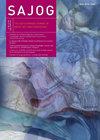三级转诊中心剖宫产瘢痕异位妊娠的发生率和结局
IF 0.3
Q4 OBSTETRICS & GYNECOLOGY
引用次数: 0
摘要
背景剖腹产疤痕异位妊娠(CSEP)是一种罕见的情况,在这种情况下,孕囊植入前一次剖腹产(CS)的子宫疤痕内。如果在子宫内继续妊娠,胎盘植入或子宫破裂的风险会增加。客观的根据每位患者的临床表现、孕龄和血液动力学稳定性,研究四种治疗CSEP的方法。方法。CSEP病例(N=30)在埃及沙比妇产大学医院通过超声诊断。根据孕龄采用各种治疗方式对患者进行治疗。治疗包括吸刮术(n=12)、局部注射甲氨蝶呤的胚胎缩小术(n=2)、腹腔镜切除术(n=3)和剖腹手术切除术(n=3)。在诊断时和治疗后每周测量血清β-人绒毛膜促性腺激素(β-hCG)水平,直到水平恢复到非妊娠值。后果胎龄(周)与采用的CSEP管理策略之间存在显著的正相关。β-hCG水平从治疗前下降到3周后随访期结束。在这项研究中,没有病例需要子宫切除术,也没有产妇并发症的报告。结论适当的CSEP管理策略因胎龄而异。局部注射甲氨蝶呤吸引和胚胎缩小是一种有效、安全和微创的手术治疗异位妊娠组织的方法。建议在CSEP治疗后密切监测患者的随访,包括连续测量β-hCG水平和超声检查。本文章由计算机程序翻译,如有差异,请以英文原文为准。
Incidence and outcomes of cases of caesarean scar ectopic pregnancy in a tertiary referral centre
Background. Caesarean scar ectopic pregnancy (CSEP) is a rare condition in which the implantation of the gestational sac takes place within the uterine scar of a previous caesarean section (CS). If the pregnancy continues within the uterus, the risk of placenta accrete or uterine rupture is increased. Objective. To investigate four treatment methods, based on each patient’s clinical presentation, gestational age of the pregnancy and haemodynamic stability, for the management of CSEP. Methods. CSEP cases ( N =30) were diagnosed by ultrasound at the Shatby Maternity University Hospital, Egypt. Various treatment modalities, based on gestational age, were employed to treat the patients. Treatments included suction curettage ( n =12), embryo reduction with local methotrexate injection ( n =12), laparoscopic excision ( n =3) and excision through laparotomy ( n =3). Serum levels of beta-human chorionic gonadotrophin (β-hCG) were measured at diagnosis and weekly following treatment until the levels returned to non-pregnant values. Results. There was a significant positive correlation between gestational age in weeks and the CSEP management strategy employed. β-hCG levels decreased from before treatment to the end of the follow-up period 3 weeks later. No cases required a hysterectomy, and no maternal complications were reported in this study. Conclusion. The appropriate CSEP management strategy varies according to gestational age. Suction and embryo reduction with local methotrexate injection offers an effective, safe and minimally invasive surgical treatment to remove ectopic pregnancy tissue. Closely monitored follow-up of patients, including serial measurement of β-hCG levels and ultrasonographic examinations, is recommended after CSEP management.
求助全文
通过发布文献求助,成功后即可免费获取论文全文。
去求助
来源期刊

South African Journal of Obstetrics and Gynaecology
Medicine-Obstetrics and Gynecology
CiteScore
0.40
自引率
0.00%
发文量
5
审稿时长
15 weeks
期刊介绍:
The SAJOG is a tri-annual, general specialist obstetrics and gynaecology journal that publishes original, peer-reviewed work in all areas of obstetrics and gynaecology, including contraception, urogynaecology, fertility, oncology and clinical practice. The journal carries original research articles, editorials, clinical practice, personal opinion, South Africa health-related news, obituaries and general correspondence.
 求助内容:
求助内容: 应助结果提醒方式:
应助结果提醒方式:


